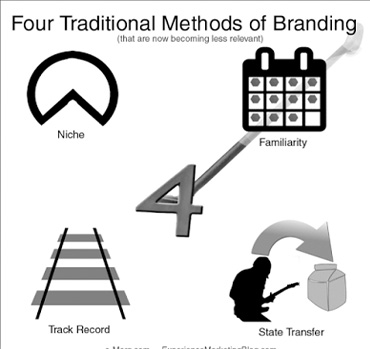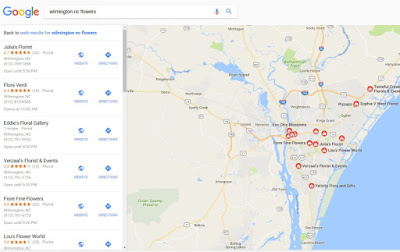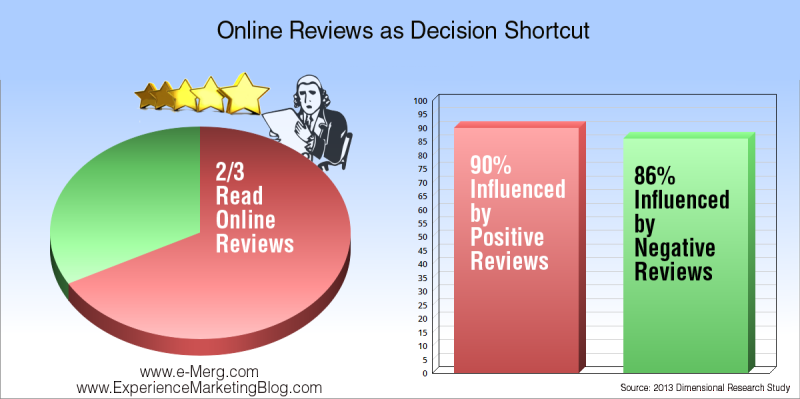Thought Leadership Studio Blog Posts:
Avoid the Accidental Brand
When the marketplace disagrees with the intended brand, accidental branding takes over. Let's take a tour of the Brandscape.

#branding, #experiencemarketing, #innovation, #marketing, #marketingstrategy, #marketresearch, #nlp, #onlinereviews, #strategicthoughtleadership, #thoughtleadership, #thoughtleadershipmarketing
What is a brand? Why is it worth so much to companies to create? Are companies losing control over branding to online reviews? Or did they ever really have control?
 Hop in the muddy safari tour jeep before the sun sets behind the clouds of dust. Let's take a rumbling ride to the tune of coyote howls and stench of diesel fumes: a tour of the Brandscape.
Hop in the muddy safari tour jeep before the sun sets behind the clouds of dust. Let's take a rumbling ride to the tune of coyote howls and stench of diesel fumes: a tour of the Brandscape.
It's hard to hear over the engine, but I think I heard "What exactly is a brand?" Well, according to some, it is the state associated with a company, "state" being another way of sayin' the fancier gestalt of images, sounds, and feelings. - maybe even tastes and smells.
It's hard to put it simply because, while a company's brand includes the feeling you get when you think of the company, it most certainly isn't just that ... because we are multi-sensory critters. We don't just feel. We see, hear, taste and smell too.
According to some, we might even have a sixth sense. You know how you can feel it when someone is staring at you from behind? That comes in handy out here on the safari Brandscape. And you can build that extra brand-sense. Hang on until the end and I'll share an exercise for that.
For now, reflect on this:
Brands are Multiple Channel
So, a brand is a multi-sensory association ... - ..not just what you feel about the company, but also...
- ...what you see in your mind's eye...
- ...what you hear in your mind's ear...
- ... and any tastes and smells it reminds you of.
Some folks think a brand is just a logo and color scheme. But logos on their own are just attempts at brand creation. Suppose a designer creates a "hip" vibe with just the right colors and image. Some people who only see that might connect "hipness" with that company.
But this Brandscape is littered with the bones of attempted brands that only focused on design. See, people have experiences and these brand-defining events imprint on top of designed brand attempts like an elephant momma imprinting on top of a crocodile going after her baby.
 Back in the day, when I lived on Folly Beach, there was a diner called the "Sanitary Restaurant." I think that name was a feeble brand attempt, or maybe irony creates conversations. But, they made a decent enough breakfast for when early-bird motorcycles woke me in that paradise of dunes, wind, salt, and sandals. The brand irony is that I still remember the distinctly unsanitary smell of burnt oil and eggs the place reeked of. That sensory memory got imprinted and anchored to the thought of them. It lingers when their name is mentioned decades later.
Back in the day, when I lived on Folly Beach, there was a diner called the "Sanitary Restaurant." I think that name was a feeble brand attempt, or maybe irony creates conversations. But, they made a decent enough breakfast for when early-bird motorcycles woke me in that paradise of dunes, wind, salt, and sandals. The brand irony is that I still remember the distinctly unsanitary smell of burnt oil and eggs the place reeked of. That sensory memory got imprinted and anchored to the thought of them. It lingers when their name is mentioned decades later.
Along with our senses, that Brand gestalt also includes - the emotions that arise at the thought of the company.
- It also includes the words that come to mind.
So, a brand pretty much uses all of the channels of our conscious minds to form a largely unconscious, multi-sensory/feeling-state/language gestalt (yeah, I know, that word again) anchored to the name or image of a company, organization or person.
And those anchors drive purchase decisions.
Brands are Toll Road Bypasses
When branding works, that branded state adds value to the customer by saving time and thought with a decision shortcut. If the company's marketing shaman put the right ingredients in the boiling cauldron, the logo acts like a talisman, mesmerizing the gaze of the desired segment of the marketplace by evoking the desired state automatically.
Let's take a turn in our survey of the Brandscape and head to the city.
Think of a city having traffic problems: for example, the clogged rush hour arteries here in sunny Charleston, SC. Imagine you see the lines of barely moving cars, the waves of heat rising from the asphalt. As you feel a bit of sweat dripping in response to the lowcountry humidity, you hear the rumbling of idling motors and occasional honking horns. You've got a couple options for the route home and one is faster but more stressful while the other takes more time but is a more pleasant drive, with a view over the harbor past the palmetto trees at White Point Gardens.
If the city traffic represents the thinking that goes into a purchase decision, a good brand is like an easy flowing but - if built in ye olden ways - possibly expensive toll road that bypasses the congestion. The slow city traffic represents a carefully considered buying selection whereas branding zips the buyer right to a purchase decision.
The company pays that toll for the drivers with its branding efforts and its success determines how many driver-buyers take advantage of it.
Four Traditional Ways to Build a Brand
I offer these 4 well-worn paths to give historical perspective of what brand-builders have tried in the past. All are still valid to a greater-or-lesser degree. All can have their place within a total system of coherent branding. None are what they used to be, though. The times they are a-changin'.

- Defining the Niche by occupying a particular section of the overall marketplace. Be careful because once a niche is locked in, you might get stuck there. Volkswagen's Phaeton Luxury car, built on the same platform as some Bentley and Audi luxury cars, sold poorly because the "people's car" segment didn't stretch that far up. Toyota invented the luxury Lexus brand which circumvented that issue effectively.
- Familiarity: Repetition can create trust. Repeatedly impressing a name and visual anchors like a logo on the marketplace means it has more weight and can becomes the obvious choice within its category. The Advertising Industrial Complex helped achieve this for brands like Tide. But, the tide has largely gone out on the ability to do this with traditional advertising.
- Confidence from a proven Track Record: Toyota has built a reputation for reliability and Apple for products that are user friendly. These associations create an attractive glow around their brands that illuminate new products so long as they continue to uphold the winning record.
- State Transfer to a company or product: Advertising can evoke positive feelings from an unrelated source then associate it with a product or company. Inspiring music and celebrity appearances are two ways this can be done. Ozzy Osbourne's "Crazy Train" in a Honda Pilot commercial (of all things, right?) is one example.
These 4 methods fall under the general category of intentional branding,. But, there is also accidental branding. Companies aren't totally in charge of their brands. The customer has the final say.
Intentional Versus Accidental Branding
When the marketplace disagrees with the intended brand, accidental branding takes over. The toll road leading to a purchase is blocked with a "road closed" sign. That sign is often made out of social media firestorms of customer experience backlash.
Here are three examples of accidental branding:
- The customer service nightmare that was Comcast's cancellation call from hell went viral and confirmed many peoples' worst fears about Comcast.
- When United Airlines broke musician Dave Carroll's guitar and refused to make matters right, he wrote protest songs about it. The songs became viral hits to United's embarrassment.
- Paypalsucks.com was an example of how corporate hate websites can emerge as central hubs for discontent. I just noticed it is no longer up, so maybe PayPal redeemed itself? Court action? Settlement?
Negative online sentiment doesn't have to take such an extreme form as these traffic-blocking train wrecks to block the shortcut .. umm, brandway.
A steady stream of less-than-happy reviews or social media commentary can erode the edifice of the intended foundation of a would-be strong brand.
Multiple Perspective Brand Design
The best branding comes from multiple perspectives:- First Position: Your perspective- from within the organization.
- Second Position: The customers' perspective.
- Third Position: The observer perspective of detached observation of the customer experience by a non-involved party.
- Fourth Position: The systems perspective offered by Systems Thinking and Game Theory.
These 4 perceptual positions, derived from NLP, enable creating a robust and positive brand. First position is about brand intention. Second brings in empathy. Third and fourth positions bring insight.
Consider Elevated Customer Experience Your Highest ROI Branding Investment
An even stronger brand than you or your team could have envisioned can be emergent from the system when your highest priority is positive customer experience. Hence the importance of including the systems view in brand design, as it reveals and enables us to confront habitual yet ultimately toxic typical management mindsets that prevent putting experience first.
The systems view, as shown by Systems Thinking gurus like the Vanguard Group from the UK, will reveal that the customer sets the value of the service so budgeting from another point of view will actually drive costs up. Design for value as defined by second position and a stronger brand than you might have imagined will be emergent from customer happiness.
Why? For one thing, speaking of the systems view, there's a feedback loop that didn't exists a few decades ago.
Online Reviews and Branding
Online reviews can circumvent the dynamics of poorly implemented intentional branding altogether. A buyer can use online reviews as a helicopter ride straight to a decision instead of either the slow traffic of a considered purchase or the fast track toll road of a brand.
The Wilmington Flowers: Brand Shortcut via Online Reviews
 My aunt was in the hospital in Wilmington, NC for back surgery. My family here in Charleston wanted to send flowers, so Google to the rescue: I searched for "Wilmington NC Flowers". With a list of florists in the left column with their respective 1-5 star ratings underneath, picking one was easy: I chose the one with the most stars.
My aunt was in the hospital in Wilmington, NC for back surgery. My family here in Charleston wanted to send flowers, so Google to the rescue: I searched for "Wilmington NC Flowers". With a list of florists in the left column with their respective 1-5 star ratings underneath, picking one was easy: I chose the one with the most stars.
I took the online reviews helicopter. No brand effect toll road was necessary.
So a new decision shortcut threatens King Branding as the ruler of consumer choice: Online Reviews.
Need more convincing that online reviews drive decisions?
- A 2013 study by Dimensional Research found that about 2/3 of the responders said they read online reviews:
- 90% of them said positive reviews influenced buying decision.
- 86% said negative reviews influenced buying decisions

The result of all this is that the exchange rate of branding currency is dropping. A brand intention doesn't mean much anymore unless it is congruent with the real experiences of customers who are now empowered by the web to share stories of their engagement with the company.
So there needs to be congruence between an intended brand and customer experience. How do you get this match between the intended brand and the stories customers share on the internet?
Align Customer Experience with Branding
To market effectively in the new economy, a business needs to create distinctive, positive customer experiences aligned with the intended brand. Online reviews clearly impact buying decisions and for many purchases are the primary way of sorting options. Social media gives customers a platform to tell their audience stories about a brand as well. Transparency is the rule now and we need to act accordingly.
A company is properly doing experience marketing when the customer journey is orchestrated for specific positive feelings through every interaction with the company, not just the experience of using the product or service. Experience Marketing is the strategy. Online Reputation Management is the effect.
The experience is the brand. Every touch point with a company is a relevant part of the experience.
Here are some takeaways-
- Instead of "reputation management" think "experience design".
- Create great customer experiences to harvest authentic positive reviews. People smell contrived or fake reviews from a mile away.
- If marketing is operating with a short term perspective, open it into a more strategic view.
- The company's values and beliefs should support great customers experiences. If not, start there.
- The culture should also encourage customers spreading the word as evangelists.
To summarize, with attention spans growing ever shorter in the age of distraction, decision shortcuts are of ever greater value to the consumer. Since the internet has made traditional branding less relevant, our job is now to create a great customer experience program and use digital media to enable sharing these experience far and wide.
***************************************
To deepen the benefits of this post, come along and join me for an NLP-based mental training exercise in Brandology. I suggest keeping notes to track the details. Humor me, you'll be glad you did this... it gives insight when done with immersion. Obviously, it needs your full attention. Don't do it if you are
reading this on a laptop balanced on your motorcycle handlebars on the highway. Park your bike and take some time to do it properly.
And, yes, it will take some time to do the following
Brandometer building exercise properly. You'll want to set aside 45 minutes. So, if you can't do it now, schedule a time and put a link to this on your calendar. Even if you are already a branding Ninja, I am very confident you'll find it worthwhile. Even Ninjas can still improve their skills yet further. Or, they can encounter an entirely differently school of martial arts, maybe Wing Chun, that is counterpoint to if not a paradigm shift from their prior training in Ninjutsu.

Member-only content- a mental training exercise to build your
Brandometer.
Click here to login to view. You'll be returned to the same place.
Click here to register for a free membership.

TLS Member-only Content Section
Build Your Brandometer
Part I: calibrating liked vs. disliked. How does your brain code things you like versus not?
- First, to tune up and calibrate your internal brand perception meter, think about someone you don't like all that much...not someone you hate, just someone who you would not choose to be around.
- Imagine that "disliked" person is here with you now. See their face, hear their voice, feel their presence.
- Notice where in your mind's eye you see them as you think of them .. in front? above? to the right? left? Close? Farther away?
- Notice the feeling of being with them - where in your body is the feeling? And how does it move? Up? Down? Left? Right? Take note of anything else particular about the feeling.
- Shake this off completely by doing something to shift your state of mind... get up and walk around, do a jumping jack, something like that. Hell, bake a cake. Send me some if you do.
- Now, think of someone you really like being around and enjoy. And, yes, your dog or cat would work perfectly for this. They are people too, after all.
- Just like with the "disliked" person, imagine that "liked" person is here with you now. Again, see their face (or snout), hear their voice, feel their presence.
- Again, notice where in your mind's eye you see them as you think of them .. in front? above? to the right? left?
- Notice the feeling of being with the "liked" person now - where in your body is the feeling? And how does it move? Up? Down? Left? Right? Again, take note of anything else particular about the feeling.
- Again, take time away to do something random to "shake it off". This part is important for avoiding "state contamination" that could otherwise detract from the precision of perception this helps you improve. It's like ginger for sushi.
- Make a short list of only the differences in where you saw the image and how you felt between the "liked" and "disliked".
Part II. the Nuances of Brand Perception. Begin to fine-tune your awareness of brand and its impact.
- Properly calibrated, now think of Apple- the company, not the fruit. Does it get closer to "liked" or "disliked"? Notice both the feeling and where you are looking when you think of Apple.
- Break state again, fully shedding the feelings before continuing.
- Think of Tesla- the car company, not the departed, brilliant inventor. Again, where is the image, contrasted to your "liked" vs. "disliked" locations and what brand feeling emerge? Did the mention of the inventor Tesla evoke a different feeling for you than the car company Tesla? If so, what does that bring to mind about how branding works?
- Shake it off again. Think about a company you dislike and notice the same things. Go through all the prior steps in sequence.
- "Break state" fully and completely again
- Now think of a company you love. Again, go through all the prior steps for this "loved" company.
- As you think about the company you love, as if you are present with their product or service, make note of the image location and all the aforementioned details of the feeling.
- While you are "there" with the company you love, do a quick free-association exercise: list all the factors, memories, experiences, and references you can quickly think of that contributed to those feelings. You can do it as a list, mind-map, whatever you like. However you do it, come up with at least 10 factors. Write them down.
- Since we used Apple for an examples, AFTER fully breaking state again, do the same factor-building exercise for them.
- For both companies, out of those factors, how many did the company have direct, intentional control over?
- How many did they indirectly influence?
- How many were side effects of other things the companies did?
- Do you think it's more true that companies create great brands by conveying what they want people to think about them intentionally through advertising? Or is it more a side-effect of what they do for their customers .. and/or how they relate to their customers? Or, is it a mix of those factors? Or, something else entirely?
- What would create a better brand impression- (1) A slick ad that promotes an image that doesn't really match customer experiences you can easily find with reviews? -or- (2) Empowering media that helps consumers get the most value from their product or service?
- Does your own behavior and spending on marketing match what you are now learning?
- If it doesn't, what benefits do you imagine would come from bringing it more in alignment?
Part III. Amplify Your Sense of Good Branding. Begin to increase your ability to design a strong, positive brand state.
- Now, back to the Brandometer calibration: As you review your notes on the image location and feelings that go with brands and/or people you really like or love... be "present" with them again. Bring them all close to get the good feelings fully back. If you need to in order to get strong, good feelings, feel free to also surround yourself with imaginary (or real!) puppies or kittens ... or, whatever makes you feel great.
- As you re-experience those good feelings, intensify them and brighten and enlarge how you see them.... and now, while you hold the feelings, erase the space to make it "blank" like an empty movie screen.
- As you continue to hold this feeling and "image placeholder", think about how your followers, audience, prospects and/or customers experience your message and brand.
- As you think about the positive benefits you bring them, put the people experiencing those benefits in that image placeholder space while you amplify those positive feelings. Hold this for a couple minutes. They won't mind. It's a fun place to be.
- Yes, I am asking you to attach all those positive feelings to your audience's experience of your brand and message more so than the brand and message itself. It's related to the law of giving and receiving. It might be a bit counter-intuitive to some people, but it works.
- If you could design any state you wanted for your audience to associate with what you bring to them, how would you describe it? You could make a list of positive emotions, for instance.
- While you are at it, since thinking about it evokes that state in you to some degree, double that feeling. And double it again. Since you are on a roll, you might as well double the act of doubling it.
- How do you imagine it would make things different if you (and, if applicable, your team or organization) were to always be a shining example of that state in all your dealings and communications with your audience? Get it down in writing in as much sensory detail as possible: what you will see, hear and feel that lets you know this is going on... in as many contexts as you can think of.
- If you really want to maximize your marketing genius meta self-programming, you can also record yourself reading that out loud into an app that allows playing it back while you are in a relaxed state daily.
Needless to say, but I am saying it anyways, you actually need to
do the sequence of exercises above to get anywhere near the full benefits. Just reading through them is nowhere near the same thing and, at best, gives a mild sense of the full potential of doing them properly. Anyways, haven't you always wanted to be a walking Brandometer? And, sure, I'd be happy to make you a little badge to that effect with Photoshop, some cardboard and scissors. Oh? OK, never mind on that.
//End TLS Member-only Content Section
***************************************